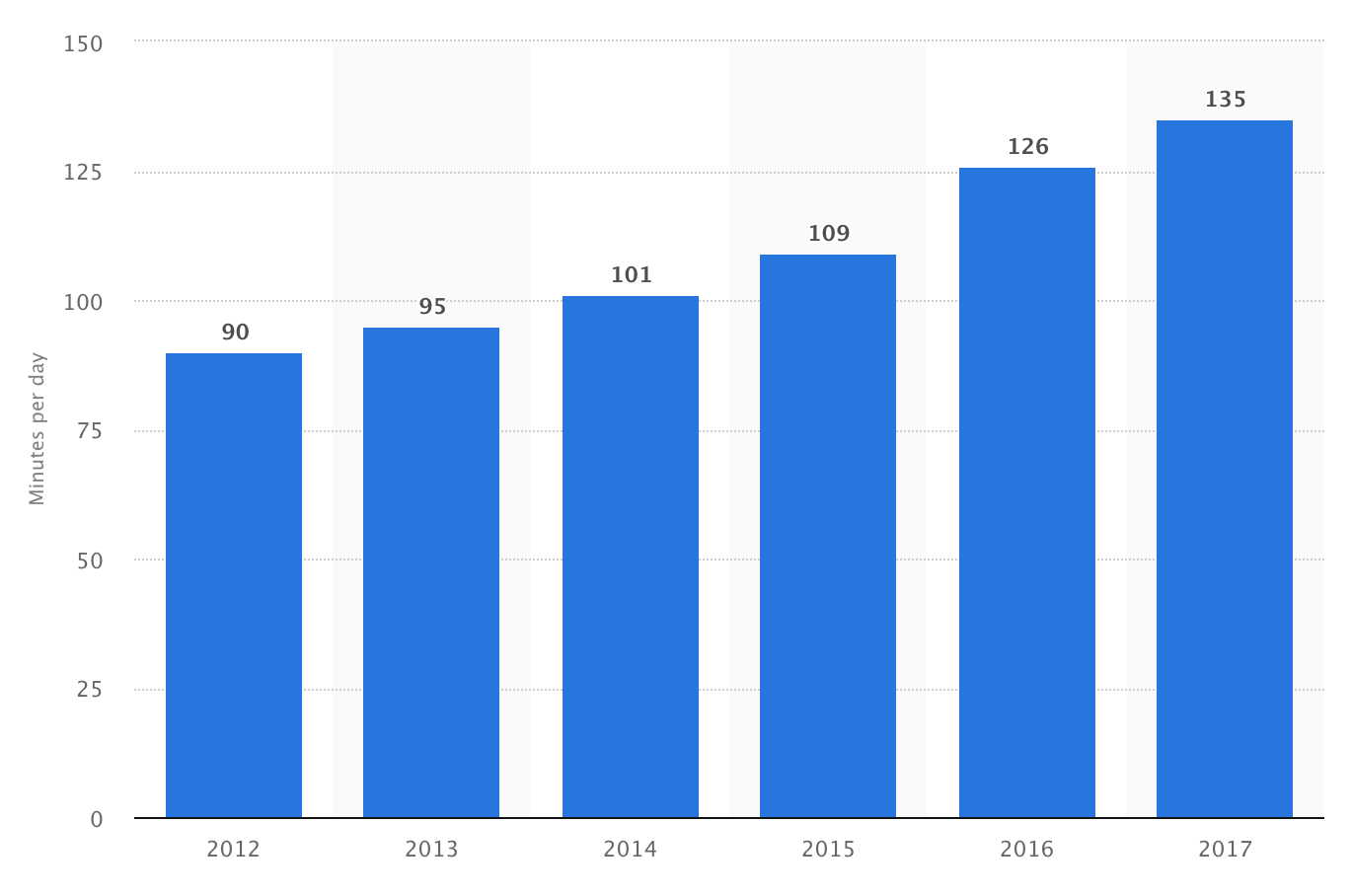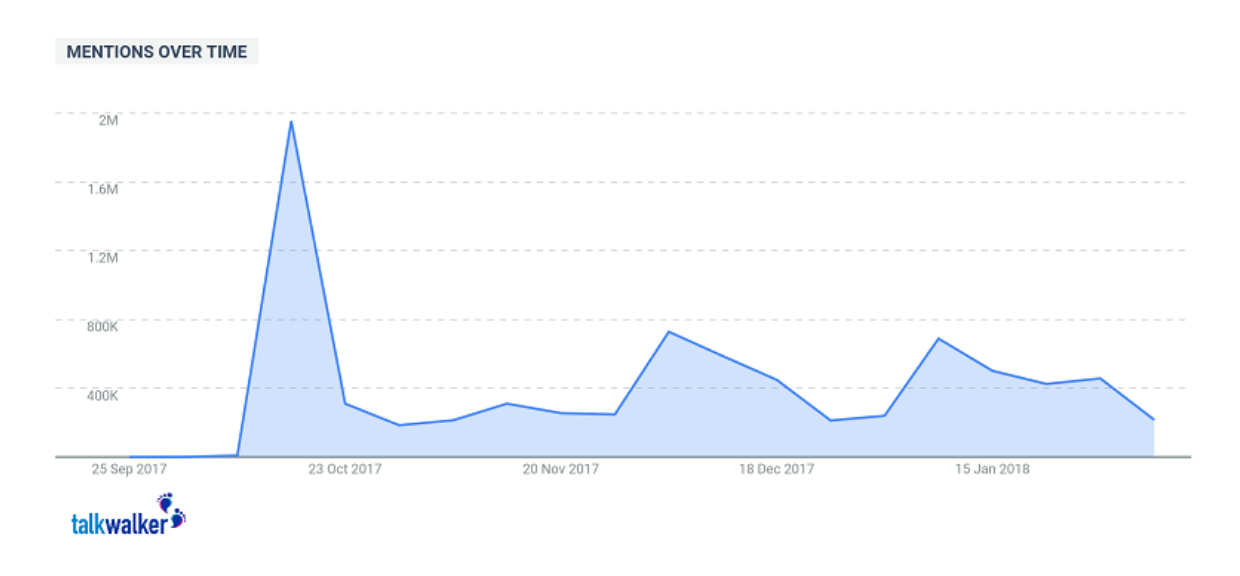The 10 Best Social Media Campaigns of 2018
Beep beep. Beep beep.
That’s the sound of your alarm. You stretch, you roll over, your hand automatically reaches for your phone, and – bam – you’re scrolling through Facebook. No one’s posted anything overnight, but your thumb’s go-to scrolling action is hard to resist, especially when everyone else is probably doing exactly the same thing.
In fact, they’re definitely doing the same thing.
In 2017, the average person spent 135 minutes scrolling through social media every day. So, that automatic morning Facebook scroll? You’re not alone.
That’s over two hours of pure scroll-age every single day. Because of the sheer amount of time we spend on social media, brands that don’t market themselves using this method are seriously missing out; they’re missing out on a great way to build leads and to create a presence in a place where their audience is actively hanging out. Luckily, there are very few brands that put themselves through that hardship. The majority are on social media and are reaping the benefits from it. In fact, 78% of businesses have teams that work solely on branding and marketing through social media.
But who’s doing it best?
I’ve put together a list of the ten best social media campaigns to have graced our screens so far this year. Hold tight, things are about to get good.
1. KFC’s 11 Herbs and Spices
Remember the good old days when no one knew what went into the Colonel’s recipe? We’d talk about it for hours over dinner and drinks with friends (and when I say dinner and drinks, I mean scoffing down a kebab after closing time at the local bar), but no one could get to the bottom of the mystery.
Little did we know that the Colonel wasn’t keeping it a secret.
You see, late last year, the brand started following just eleven people on Twitter: the five original Spice Girls and six guys named herb.
We scratched our heads (or were completely oblivious to the very vague stunt), until Twitter user @edgette22 came to our rescue. They’d figured out the centuries-old secret the Colonel was keeping from us:
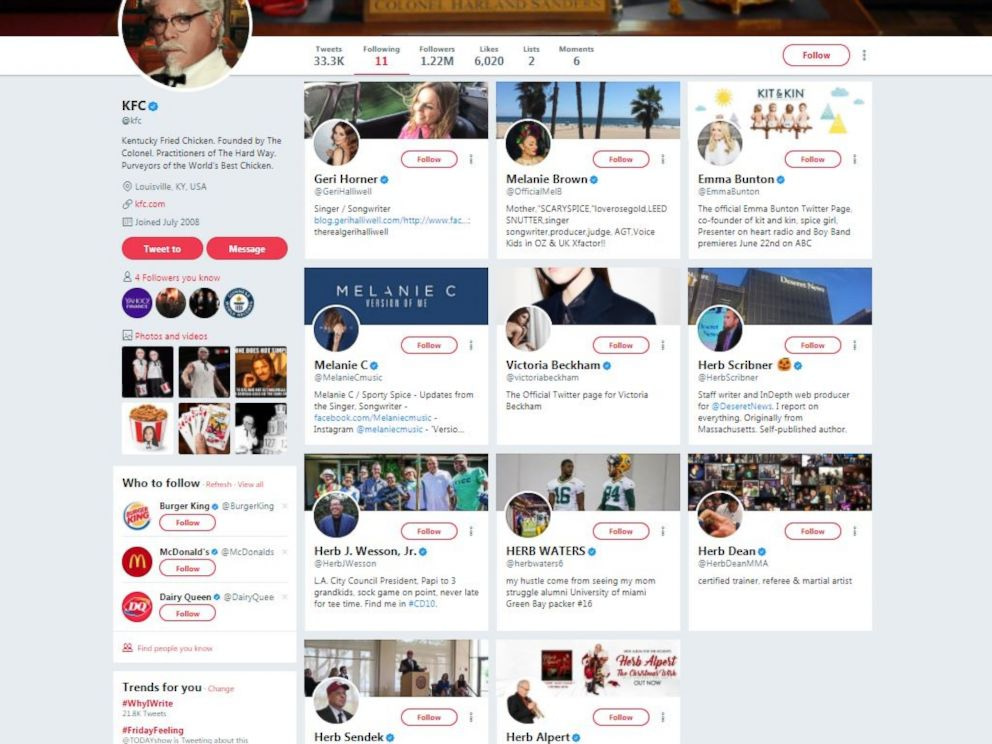
The original Tweet has been favorited more than 700,000 times and received more than 300,000 comments.
Freddie Powell, the creative director at KFC’s umbrella company Wieden+Kennedy, said the team planted the secret on Twitter a month before they were outed. “Frankly, we weren’t sure if anybody was going to find it,” he said. “Sometimes you just have to put stuff out into the universe and cross your fingers that the internet will work its magic.”
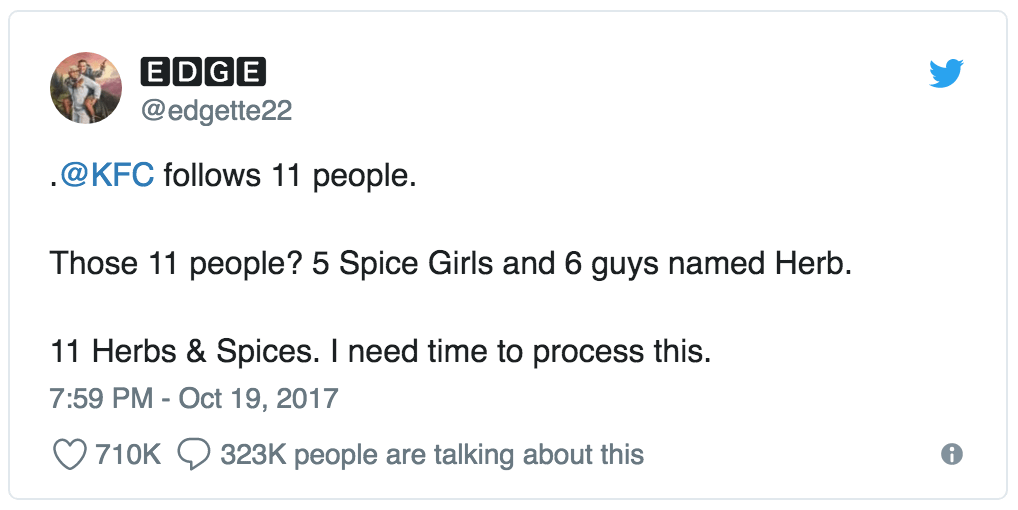
Why KFC’s Campaign Was Successful
The Colonel’s secret recipe was a common topic of conversation for KFC aficionados. With this stunt, the marketing team answered a “pressing” question and did it in a way that wasn’t overt and over the top.
They relied on their fans to uncover the truth and, lo and behold, they did! Social media campaigns don’t always have to be loud and in your face; sometimes it’s the subtle ones that cause the biggest stir.
And KFC milked the stir for all it was worth by continuing the momentum of the stunt. They created a painting of Twitter user @edgette22 being carried by the Colonel which, again, was voraciously retweeted and spread around the web.
2. Spotify’s New Year’s Resolution Campaign
Spotify’s 2017/2018 New Year’s Resolution campaign came off the back of their “Thanks, 2016… It’s Been Weird” campaign from the previous year. This time, they focused on New Year goals based on weird and wonderful data they grabbed from user playlists and streaming habits.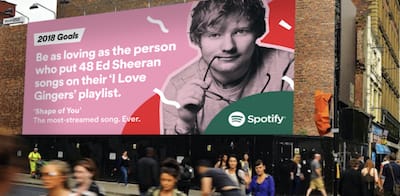
They then printed out these data points in a storytelling format and pasted them up on billboards around the country. By taking the digital brand to the streets, it gave it a sort of “hyperlocality”, as explained by Spotify CMO Seth Farbman:
“Out-of-home gives that hyperlocality that gives those “aha” moments to people. And it allows a digital community to feel connected in a physical way. This is happening here. We’re all seeing this and remembering this moment together.”
And isn’t this getting straight to the core of social media?
The idea of bringing social media data, shares, and playlist peculiarities to the “big screen” came off the back of previous Spotify campaigns that had leveraged social media to go viral. “What we started to see is a lot of artists, when we put up a billboard, they will take a selfie in front of the billboard,” said Farbman.
“Because that’s a moment. When you’ve made it on a billboard, you’ve made it, right? They share it on their social channels, and we observe a tremendous spike in the sharing and the traffic and the engagement with that artist’s page. So we thought, alright, what’s the fan version of this?”
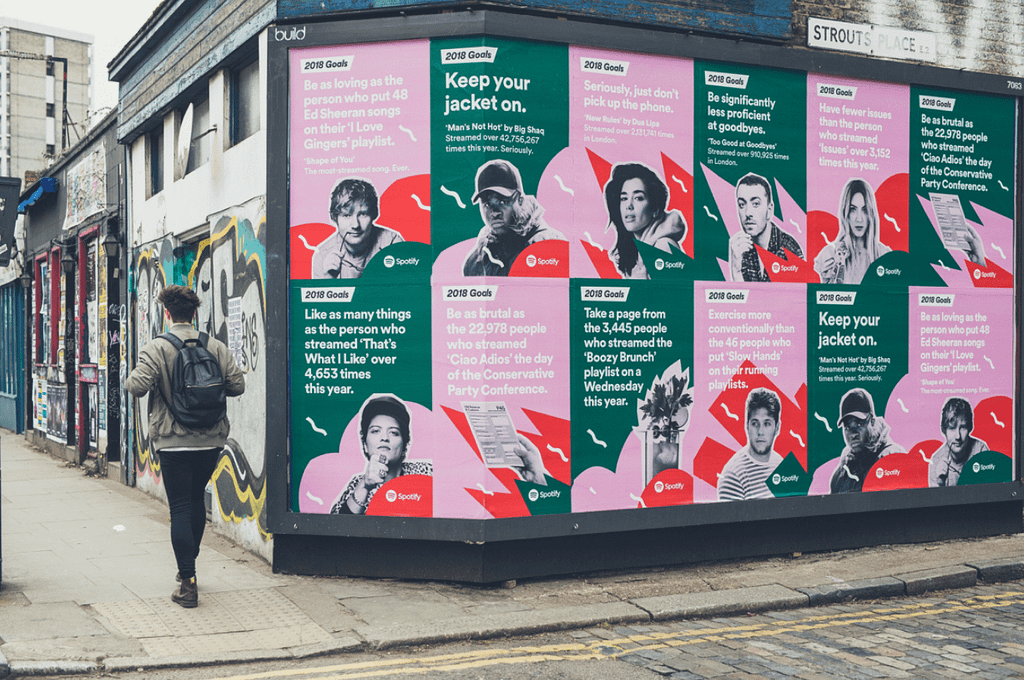
Why Spotify’s 2018 Goals Campaign Worked
Simple, really. They bridged the gap between online and digital to give a worldwide brand a more local feel.
Social media is all about creating connections, and giving this campaign a hyperlocal feel exacerbated that particular benefit of social media despite it being an essentially offline campaign. However, many of the billboards were posted online and were shared thousands and thousands of times.
3. Kellogg’s Eggo Campaign
When Eleven from Stranger Things professed her love for Eggos, the world was both baffled and could relate.
And for Kellogg’s, the opportunity to promote their waffles was a no-brainer.
Using the free plug from one of Netflix’s most marketable shows, Eggos saw a roaring comeback thanks to a social team that quickly jumped on the hype around the #StrangerThings hashtag that dominated the airing of season two.
 As well as sharing GIFs and images of Eleven and her beloved snack, the creative team posted Youtube videos of scenes from the show made completely out of waffles, and even released a nine-course menu that viewers could use to pair an Eggo recipe with every episode of season two.
As well as sharing GIFs and images of Eleven and her beloved snack, the creative team posted Youtube videos of scenes from the show made completely out of waffles, and even released a nine-course menu that viewers could use to pair an Eggo recipe with every episode of season two.
Why Eggos’ Stranger Things Campaign Worked
Firstly, Kelloggs saw an opportunity and ran with it like the wind.
It’s not often your product gets a free plug by one of the most successful TV shows of the moment, and it would have been foolish for them not to jump on the bandwagon. But not only did Kelloggs’ social team jump on a current trend, they also created a variety of different kinds of posts across a range of channels; from videos on YouTube to GIFs on Twitter, they tapped into what people wanted at that moment.
4. #PuberMe
Everyone loves a chance to do something good, and the #PuberMe social media campaign tapped into this powerful drive to be a good person.
It all started when The Late Show host Stephen Colbert and actor Nick Kroll asked celebrities to share awkward photographs of their teenage selves using the #PuberMe hashtag. In exchange, the duo would donate money to help Puerto Rico overcome the damage caused by Hurricane Maria.
You could almost hear the hooves of celebrities charging into battle. Shortly after Colbert and Kroll announced the campaign, stars like America Ferrera, Jimmy Kimmel, James Corden, Reese Witherspoon and Amy Schumer had shared their embarrassing pics.
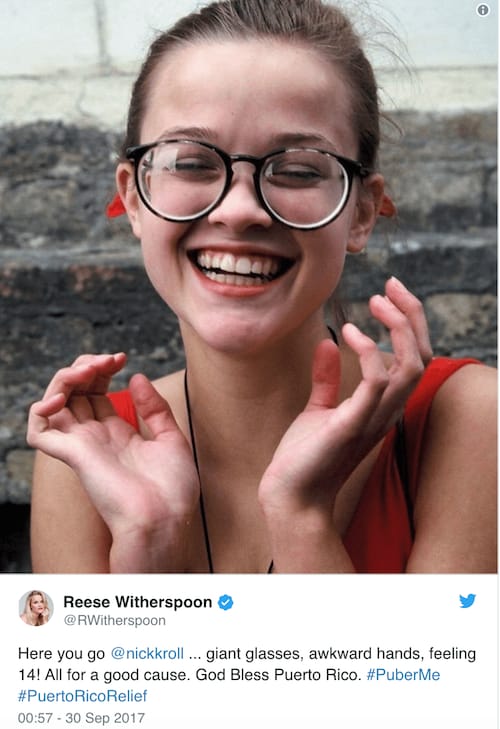
Why the #PuberMe Campaign Worked
Aside from the fact it’s aim was to raise money for a great cause, the campaign tapped into the power of leveraging celebrities and their large followings in campaigns.
Many of the stars that got involved had over a million followers, so the message instantly had a huge reach. Not only that, but the premise of the campaign – to post awkward teenage pictures – tapped into society’s curious need to see celebrities looking less than perfect.
5. Intuit’s Social SuperBowl Campaign
Intuit, a Silicon Valley software giant, has launch a spanking new brand campaign that’s set to reach a crescendo during the 2018 SuperBowl.
Working alongside an animation team, the brand have created “A Giant Story”, using a huge, animated robot as a metaphor for the complex way Intuit’s services tap into data using new technologies.

CMO Lucas Watson said the aim was to humanize the brand’s story by using the tale of a flower shop owner – something that its self-employed audience could relate to. As well as the 15-second ad airing at the SuperBowl, Intuit have big plans to take over the digital sphere with their giant, complete with a Snapchat filter featuring the character and other social media references.
“We’ll now advertise the brand for the rest of our lives,” added Watson, with CCO Chris Adams going on to say that “we’re already working on where this character can go from here [and] innovative ways that it can come to life in digital executions. Hopefully it’s something that’s loved and goes on for years and years”.
Why Intuit’s SuperBowl Campaign Worked
The campaign started with a relatable story and the social media team are branching out from that. By using this as a grounding point and spiralling out into different channels using the same messaging, Intuit are creating a cohesive and strong brand.
On top of that, the campaign will pack an extra punch by running across both print and digital mediums (and it’s slot in the SuperBowl will definitely help its stats!).
Read New Blog Post: The Best Social Media Marketing Campaigns of 2019
6. Wendy’s Trolling McDonalds Campaign
There’s nothing like two big brands going head to head online, right?
For Wendy’s, trolling on their McDonalds, one of their biggest competitors, is a compulsion that they can’t stop doing. Despite being much smaller than McDonalds in the great scheme of things (McDs’ 37,000 stores dwarf Wendy’s 6,500), the fast food chain is managing to absolutely whoop them on social media.
Black Friday was a fine example of Wendy’s on top form. After McDonalds Tweeted placeholder copy, Wendy’s were ready with their axes sharpened:
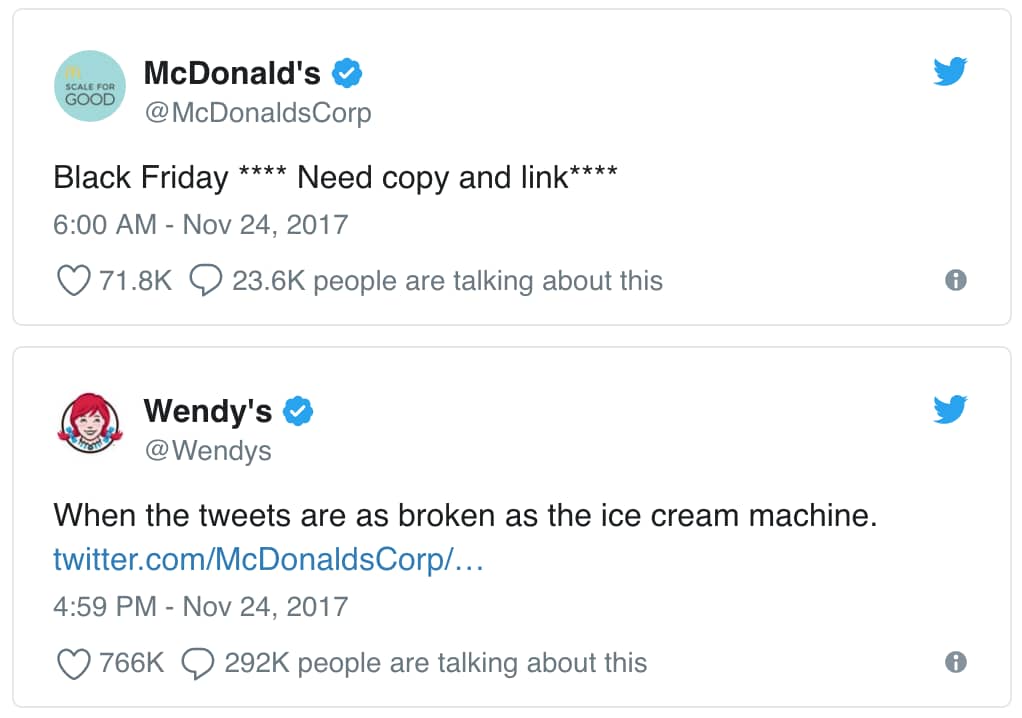
Why Wendy’s Trolling McDonalds Worked
This sparring between two fast food mega-giants only serves to humanize the brands. Wendy’s showing it’s authentic side and aligning itself with its audience.
Whatever you do, Wendy’s, don’t fire your social media team so we can see more gems like this:
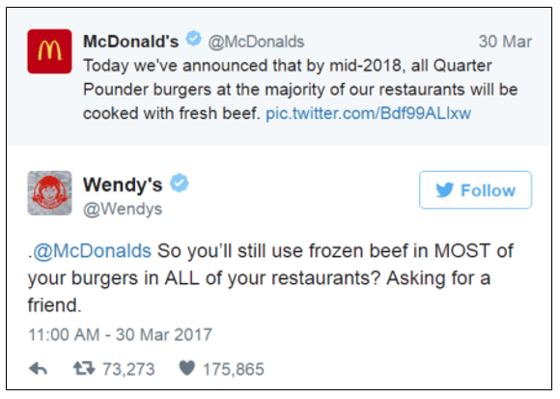
 7. #KraftEntry
7. #KraftEntry
People love contests, and food giant Kraft tapped into our competitive nature for their first-ever Super Bowl commercial.
The brand wanted to feature everyday people to reflect its family values, so it invited Instagram and Twitter users to share videos and images of themselves watching the Super Bowl for a chance to appear in the ad during the game (who doesn’t want to be star of the show during the Super Bowl?!).
To promote the contest, Kraft connected with six Instagram influencers, like LeJuan James in the lead up to the Super Bowl to help get the message out there.

Why the #KraftEntry Campaign Worked
Did we mention that people LOVE contests?!
Especially when the prize is ten seconds of fame during the worldwide extravaganza of the Super Bowl. It also helped that Kraft brought influencers onboard in the lead up to the event to raise awareness and spread the message.
But perhaps the biggest success of the campaign was that the concept of sharing family photos of people watching the game aligned so perfectly with the brand values of Kraft.
8. #MeToo
As well as creating communities around brands and fueling their social campaigns, hashtags have also been leveraged for social movements – and no example is better than the #MeToo campaign.
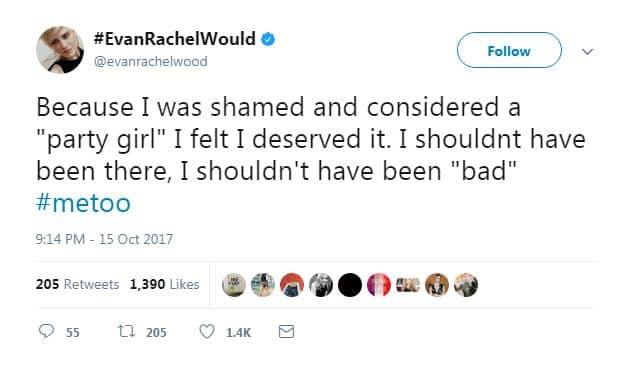
Off the back of the Women’s March in January 2017, the social media presence of the movement snowballed until it seemingly reached a head in October 2017 when the #MeToo hashtag first appeared.
During that first month, the campaign saw millions of contributors sharing their stories using the hashtag, as well as people lambasting prominent public figures through one of the only outlets they had. Even today, the hashtag is still getting a notable amount of shares.
Why the #MeToo Campaign Worked
The #MeToo campaign, along with its Women’s March counterpart, seemed to have come at the right time for women around the world. As the news became more and more populated with accusations against big-name celebrities, the hashtag worked as an outlet for women to share their own stories.
Essentially, it gave a voice to everyone.
This hashtag alone started one of the largest human rights movements we’ve ever seen, which just goes to show how powerful social media can be when it’s used collectively like this.
9. #AllTheGoodStuff by Kohls
Department store chain Kohls took over as sponsor of the Academy Awards, replacing rival J.C. Penney. In celebration, they brought a multi-channel social campaign to the masses that combined 60-second videos that were aired during the 2018 event and a digital strategy that will roll out throughout the year.
The campaign encourages viewers to share their ultimate Oscars viewing party using the hashtag #AllTheGoodStuff after the brand discovered their followers were the most engaged when sharing personal stories.
Your #Oscars speeches are so good, @VanessaBayer tried to read them all. Share yours w/#AllTheGoodStuff. pic.twitter.com/0y7mueHD2o
— Kohl's (@Kohls) February 29, 2016
On top of that, they were encouraged to share their stories of appreciation with a chance to have them aired live during Oscars night by Vanessa Bayer.
Why the #AllTheGoodStuff Campaign Worked
The campaign was so successful because it tapped into viewers’ personal stories. Noticing their audience was most engaged when voicing their own experiences, the brand really tapped into this idea and ran with it.
“There’s a strong connection between the Kohl’s brand and how customers feel, and what’s happening with those global stars up there on stage thanking their moms,” says Will Setliff, Kohl’s executive VP of marketing. “In that moment there’s immense gratitude that’s shared between those superstars and our customers.”
10. St Patrick’s Day Jameson Campaign
Patrick’s Day is a time for celebration, and many brands jump on the Irish bandwagon to promote their products.
This year, Jameson used the major yearly event to promote local bars around the country. The campaign featured a handpicked selection of professionally-shot short videos that were shared on its Instagram page.
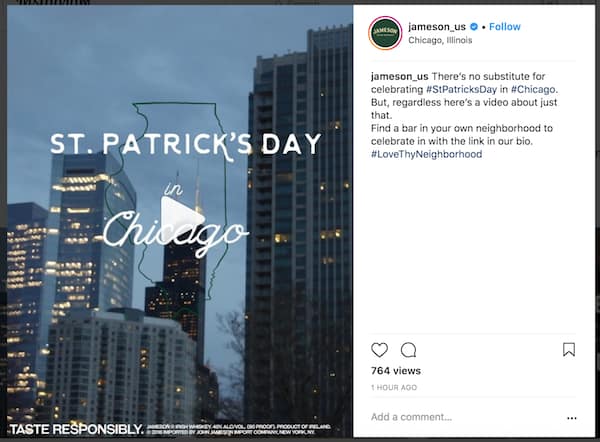
Each visual slice of goodness shared the story of a local bartender making drinks and discussing how his or her city celebrates one of the biggest events in the bar scene calendar.
Why Jameson’s St Patrick’s Day Campaign Worked
Again, Jameson tapped into the power of personal stories and dug deeper on a local level to make their brand more authentic and relatable.
Add to this the use of video – which, if you haven’t heard, is a rapidly growing social media trend that can boost social shares by 12x – and you have an engaging campaign that people can really get behind.
The Power of Social Media
Social media is an incredibly powerful force for brands to tap into. Not only are their customers regularly scrolling through channels on the daily, but they can show their authentic side to create deeper connections with those people.
From social movements to big-name brands trolling their rivals, social media has seen some great campaigns in 2018 so far and we’re excited to see what happens next.
Read New Blog Post: The Best Social Media Marketing Campaigns of 2019

